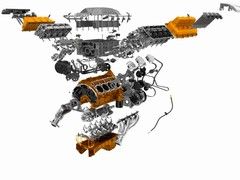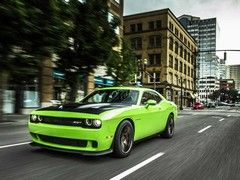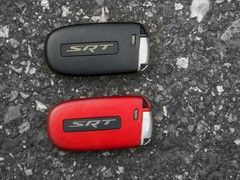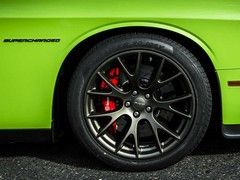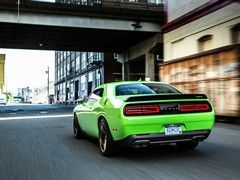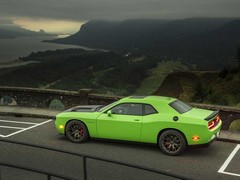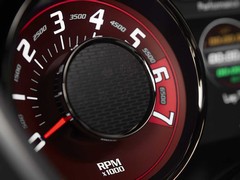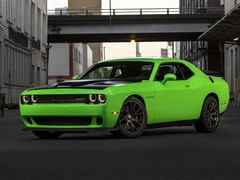Dodge Challenger SRT Hellcat: Driven
It's got 707hp and costs less than a BMW M4 in its home market - God Bless America!
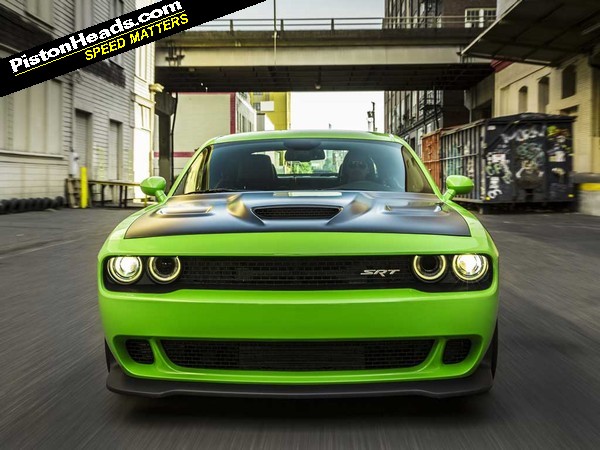
Because, with apologies for going a bit Clarkson, this is The Most American Car... In The World.
No, really. With all due respect to the US's other contributions to the world of motoring, from inventing the production line onwards, the American car industry's greatest triumph has always been muscle. And as the brawniest production car from any of the big three so far, that means the Hellcat goes straight to the top of the pile.
One number really matters: 707bhp. That's what the Hellcat's supercharged 6.2-litre V8 is claimed to make, although some private dyno testing in the 'States suggests that number might be slightly pessimistic. Dodge hasn't released any official performance figures, the big teases, but US magazines have recorded mid-threes 0-60 times and sub-nine 0-100s. This in a car that weighs slightly over two tonnes.
Nursing a Hemi
Nor is it a grenade-spec limited edition. The engine is a fully rebuilt Hemi V8 with forged steel crank, forged alloy pistons and a 9.5:1 compression ratio that drops swept capacity to 6.2 litres (the naturally aspirated SRT Hemi displaces 6.4 litres.) That's necessary because of the vast supercharger that sucks air from a hole where the driver's side inner headlight used to be, rams it through dual intercoolers, and then forces it into the engine at up to 11.6psi.
The Hellcat is sold with two keys. The black one is the 'valet key' with which you presumably entrust the Challenger to an acne-covered teenager. This limits revs to 4,000rpm and prevents the stability control from being switched off. The red one doesn't do either of those things, and is therefore the one we're using today.
First impressions are that the SRT shares the same low-rent cabin as the rest of the Challenger range - the smell of cheap plastics is the first thing that meets you when you open the door. The carbon fibre trim looks so unconvincing it must actually be carbon fibre. But from the moment the engine fires up into a proper bubba-bubba idle, that ceases to matter.
Liberal application
Full throttle is definitely something you build up to. The supercharger starts to whine around 2,000rpm and, even with a gentle throttle application there's the feeling of enormous thrust pushing you along. And as you increase foot pressure that builds in a similarly linear fashion. Well before the pedal is halfway to the floor it feels fast-car fast, and beyond that it just gets sillier - especially as the software controlling the eight-speed autobox starts to select lower ratios. Somewhat improbably, Dodge is also going to offer a six-speed manual version. Good luck getting a clutch replaced under warranty in that.
By the time your foot eventually finds the carpet the Hellcat is accelerating - and sounding - like those bits in Mad Max 2 where the footage is speeded up.
With the everything switched on the vast 275/40 R20 Pirelli rear tyres do a decent job of finding traction. You're only really made aware of the battle that's going under the wheels by the stability control light's flashing - something it's still doing well north of 60mph on dry tarmac. Turn the stability off and try to do a fast launch and things get very silly. Once the wheels start spinning you have to pretty much come off the throttle to get them to hook up again. If you subscribe to the view that tyres are evil and must be destroyed, the Hellcat is definitely the best tool for the job.
In the red corner
The chassis feels fairly soft with the adjustable dampers in their standard mode, they can be firmed up through the central display screen that enables engine, transmission and stability control settings to also be sportified. On real roads the abiding impression is of the Challenger's width and the lightness of its steering. You can hustle it along at a solidly rapid pace, but there's no doubt it's a car that's been designed primarily to perform in straight lines.
Final thought - Fiat Chrysler's ownership of Ferrari means that the Hellcat is effectively first cousin to the F12; two 700hp-plus rear-drivers in the same family. The Dodge is vastly less technically sophisticated than the Ferrari, of course - and less than a fifth the price in the 'States - but after a couple of hours in it you'd struggle to say it wasn't just as exciting.
DODGE CHALLENGER SRT HELLCAT
Engine: 6166cc V8, supercharged
Transmission: 8-speed auto, rear-wheel drive, limited-slip differential
Power (hp): 707@6,000rpm
Torque (lb ft): 650@4000rpm
0-62mph: 3.6 sec (estimate)
Top speed: >150mph
Weight: 2,037kg
MPG: Come again?
CO2: Slightly this side of a coal powered power station
Price: $59,995 (US market 'MSRP' before options, sales tax and registration fee and, no, it's not available in Europe)
Gassing Station | General Gassing | Top of Page | What's New | My Stuff

